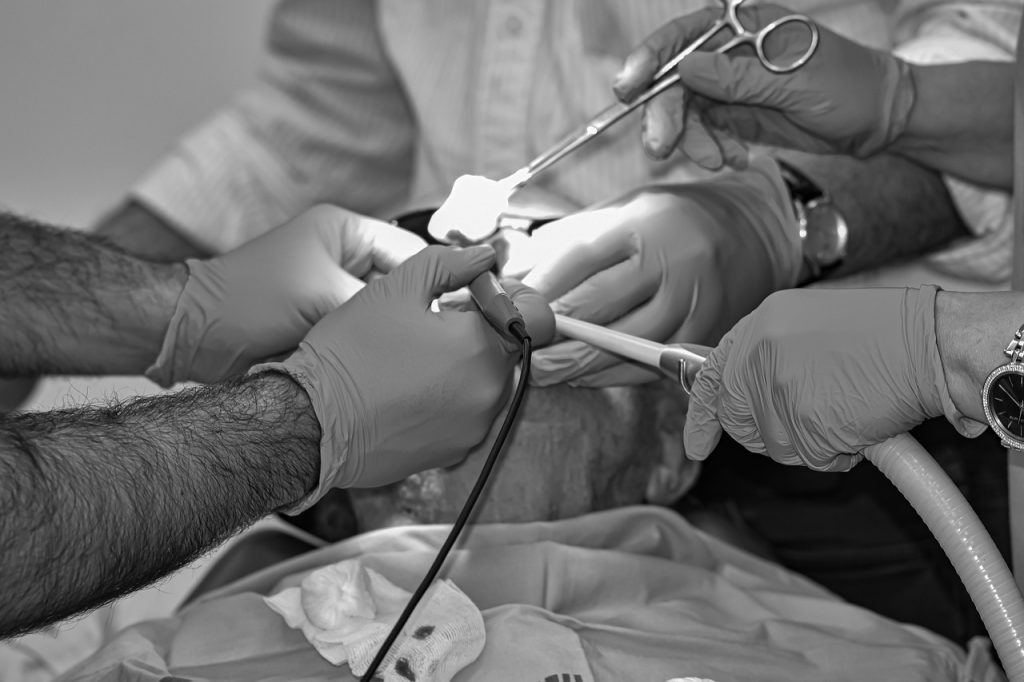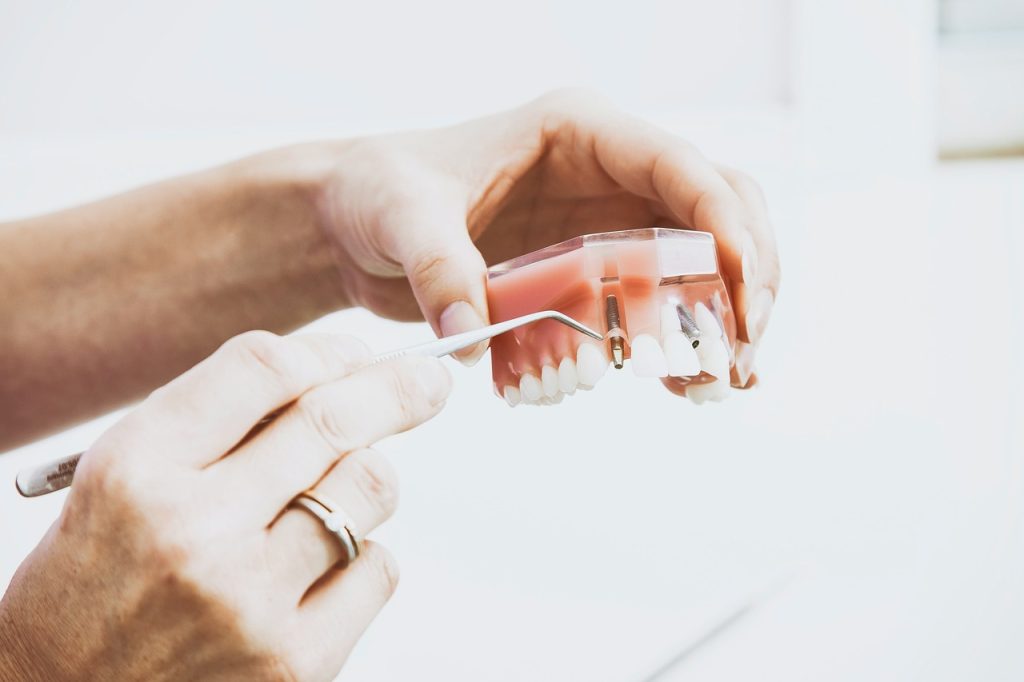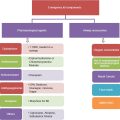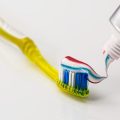So, picture this: you’re enjoying a fun family outing at the park when suddenly, your child takes a nasty spill and knocks out a tooth. Panic sets in as you frantically wonder what to do next. Well, fret not, because in this article, we’re about to provide you with some valuable information on how to handle a dental emergency involving a child. From what to do immediately after the accident to finding the right dental care, we’ve got you covered. So, take a deep breath and let’s dive in!
Determining a Dental Emergency
When it comes to dental emergencies involving children, it can be difficult to determine the seriousness of the situation. Understanding the signs of a dental emergency and common dental emergencies in children can help you make an informed decision.
Signs of a dental emergency
Signs that indicate a dental emergency in a child include severe pain, bleeding gums, loose or knocked-out teeth, broken teeth, swelling of the face or gums, and difficulty in eating or speaking. These symptoms should never be ignored as they can indicate underlying issues that require immediate attention.
Common dental emergencies in children
Common dental emergencies in children include toothaches, knocked-out teeth, broken teeth, and bitten lips or tongues. These situations can be distressing for both children and parents, but it is important to stay calm and take immediate steps to address the issue.
Immediate Steps to Take
During a dental emergency, the first priority is to stay calm and reassure the child. Panicking may increase their distress and make it more difficult to handle the situation. Once you have a calm demeanor, you can assess the situation and determine the appropriate course of action.
Assess the situation
If the child has a knocked-out tooth, it’s crucial to act quickly. Carefully pick up the tooth, holding it by the crown, and rinse it gently with water if it’s dirty. Try to reinsert the tooth into its socket, making sure it is facing the right way. If reinsertion isn’t possible, place the tooth in a cup of milk or the child’s saliva to keep it moist. Remember to avoid touching the root of the tooth.
For a broken tooth, gather any broken pieces and rinse the child’s mouth with warm water to remove any debris. Place a cold compress on the affected area to reduce swelling and manage any pain.
If the child is experiencing toothache, gently clean around the affected tooth with warm saltwater rinse. Encourage them to spit out the rinse and not swallow it. You can also provide over-the-counter pain relievers appropriate for their age and weight, following the recommended dosage.
In the case of a bitten lip or tongue, wash the area with warm water and apply a cold compress to reduce swelling. If the bleeding doesn’t stop or the injury is severe, seek immediate medical attention.

Contacting a Dentist
After taking immediate steps to address the dental emergency, it’s important to contact a dentist as soon as possible. Finding an emergency dentist might require some research, but it is crucial to deal with the situation promptly and ensure the child receives appropriate dental care.
Finding an emergency dentist
When searching for an emergency dentist, consider asking for recommendations from friends, family, or your child’s primary dentist. You can also check online directories or contact your local dental association for a list of emergency dental providers in your area. It’s important to choose a dentist who specializes in pediatric dentistry or has experience treating children.
Calling for an appointment
When calling the emergency dentist, explain the situation in detail. Provide information about the child’s symptoms, the dental emergency, and any immediate steps you have taken. The dentist’s office will guide you on the next steps, including scheduling an appointment and any specific instructions to follow until the visit.
Home Remedies Before the Dental Visit
While waiting for the dental appointment, there are some home remedies you can try to alleviate the child’s discomfort or manage the dental emergency.
Rinsing with warm salt water
Rinsing the mouth with warm salt water can help alleviate pain and reduce inflammation. Dissolve half a teaspoon of salt in eight ounces of warm water and encourage the child to swish the solution around their mouth for about 30 seconds before spitting it out. This can be repeated several times a day, as needed.
Applying a cold compress
Using a cold compress can help reduce swelling and provide temporary relief. Wrap ice or a cold pack in a cloth and apply it to the affected area for about 15 minutes at a time. Repeat this process every few hours for the first day or until the swelling subsides.
Using over-the-counter pain relievers
Over-the-counter pain relievers can be used to manage pain in a dental emergency. However, it is crucial to follow the recommended dosage based on the child’s age and weight. Always consult a healthcare professional or pharmacist before giving any medication to a child.
Avoiding certain foods
During a dental emergency, it’s important to avoid certain foods that can worsen the situation or cause further discomfort. Encourage the child to avoid hard and sticky foods, as they can aggravate the dental issue or get stuck in the affected area. Opt for soft foods that are easier to eat and won’t put additional strain on the teeth or gums.

Preparing for the Dental Visit
Preparing for the dental visit involves gathering necessary documents, preparing the child mentally, and packing essentials for the appointment.
Gathering necessary documents
Before the dental visit, gather any relevant documents or information that may be required by the dentist. This includes the child’s medical history, dental records, insurance information, and any previous X-rays or diagnostic tests that may have been conducted. Having these documents ready can help expedite the appointment process and ensure the dentist has a complete understanding of the child’s dental health.
Preparing the child mentally
Dental emergencies can be scary for children, so it’s important to prepare them mentally for the dental visit. Explain to them in age-appropriate language what to expect during the visit and reassure them that the dentist is there to help. Answer any questions they may have and try to alleviate their fears by emphasizing the importance of addressing the dental issue for their overall well-being.
Packing essentials
When preparing for the dental visit, consider packing some essentials to make the process smoother. This can include a small snack, water, any necessary medication, comfort items such as a stuffed toy or blanket, and distractions such as books or toys to keep the child occupied while waiting for their turn.
The Dental Examination
During the dental visit, the dentist will conduct a thorough examination to assess the child’s dental emergency and determine the appropriate treatment options.
X-rays and diagnostic tests
The dentist may need to take X-rays or perform other diagnostic tests to get a comprehensive view of the child’s dental condition. X-rays can help identify any underlying issues that may not be visible to the naked eye and aid in developing a treatment plan.
Evaluating the condition
Based on the examination and diagnostic tests, the dentist will evaluate the severity of the dental emergency and discuss the findings with you. They will explain the specific issue and any potential complications that may arise if left untreated. It is important to ask questions and fully understand the condition and the proposed treatment options.
Explaining the treatment options
After evaluating the dental emergency, the dentist will present the treatment options available. This may include restorative procedures, extraction, root canal therapy, or orthodontic treatment, depending on the nature and severity of the issue. The dentist will explain each option, along with its benefits and risks, allowing you to make an informed decision about your child’s dental care.

Treatment Options
Treatment options for dental emergencies in children may vary depending on the specific issue and the dentist’s recommendations. Here are some common treatment options that may be considered:
Restorative procedures
Restorative procedures aim to repair or replace damaged or missing teeth. This may involve dental fillings, dental crowns, or dental bridges. The choice of restorative procedure will depend on the extent of the damage to the tooth and the child’s individual needs.
Extraction
In some cases, a tooth may need to be extracted if it cannot be saved or if it poses a risk to the child’s oral health. Extraction may be necessary for severely decayed or infected teeth, impacted wisdom teeth, or teeth that are severely damaged due to trauma.
Root canal therapy
Root canal therapy is a procedure that aims to save a tooth that has become infected or abscessed. The dentist will remove the infected pulp from the tooth, clean and disinfect the root canal, and then seal it to prevent further infection. Root canal therapy is often performed on permanent teeth, but it may be necessary for primary teeth in certain cases.
Orthodontic treatment
In some dental emergencies, orthodontic treatment may be required to correct misaligned teeth or jaw issues. Braces, retainers, or other orthodontic appliances may be recommended to help align the teeth properly and improve the child’s bite.
Preventive Measures
Prevention is key when it comes to maintaining good oral health and minimizing the risk of dental emergencies. Here are some preventive measures that can help keep dental issues at bay:
Maintaining good oral hygiene
Encouraging children to brush their teeth twice a day and floss regularly can help prevent dental problems such as tooth decay and gum disease. Teaching them proper brushing and flossing techniques, as well as the importance of regular oral hygiene, sets the foundation for a lifetime of good oral health.
Regular dental check-ups
Routine dental check-ups are essential for detecting and addressing any oral health issues before they escalate into emergencies. Regular visits to the dentist allow for preventive care, early intervention, and ongoing monitoring of the child’s dental health.
Wearing mouthguards
If your child participates in sports or activities that have a risk of dental injury, it is important to ensure they wear a properly fitted mouthguard. Mouthguards provide a protective barrier, reducing the risk of tooth fractures, injuries to soft tissues, and other dental emergencies.
Preventing traumatic dental injuries
Accidents happen, but taking precautions can help prevent traumatic dental injuries. It’s important to childproof the home, ensuring that potentially hazardous objects are out of reach. Supervise activities that could result in dental injuries, such as climbing or playing on high surfaces, and encourage safe play to minimize the risk of accidents.
Dealing with Dental Anxiety
Dental anxiety is common among children and can make dental emergencies even more challenging. Understanding dental anxiety in children and employing strategies to ease their fears can help them feel more comfortable during dental visits.
Understanding dental anxiety in children
Dental anxiety in children can stem from various factors, including fear of pain, unfamiliarity with dental procedures, or previous negative experiences. Recognizing and acknowledging their fears can help address the root cause of anxiety and implement appropriate coping strategies.
Tips to ease dental anxiety
To ease dental anxiety, consider the following tips:
- Choose a pediatric dentist who specializes in treating children and has experience dealing with dental anxiety.
- Use positive reinforcement and praise to motivate the child and reward them for their bravery.
- Explain dental procedures in a child-friendly manner, using age-appropriate language and visual aids if necessary.
- Teach relaxation techniques, such as deep breathing or visualization, to help the child relax during dental visits.
Providing distraction techniques
Distraction techniques can be helpful in diverting the child’s attention away from the dental procedures and reducing anxiety. This can include playing calming music, providing handheld toys or electronic devices, or engaging the child in conversation to keep their mind occupied.
Insurance and Financial Considerations
When it comes to dental emergencies, it is important to consider insurance coverage and financial implications. Understanding your insurance coverage and discussing cost and payment options with the dentist can help alleviate any financial concerns.
Insurance coverage for dental emergencies
Review your dental insurance policy to understand what dental emergencies are covered and the associated costs. Some dental insurance plans may have specific provisions for emergency dental care or coverage for certain procedures. Contact your insurance provider for clarification and confirmation of coverage.
Discussing the cost and payment options
Before proceeding with any dental treatment, it is essential to discuss the cost and payment options with the dentist. Dental emergencies can be unplanned expenses, and it’s important to have a clear understanding of the financial aspect. Many dentists offer payment plans or accept various forms of payment, so don’t hesitate to have an open conversation about the financial implications.
In conclusion, dental emergencies involving children can be distressing, but taking immediate steps, contacting a dentist, and utilizing home remedies can help manage the situation until professional care is obtained. Understanding treatment options, preventive measures, and strategies for dealing with dental anxiety are crucial for maintaining good oral health and ensuring the well-being of your child. Remember to stay calm, reassure the child, and seek professional dental care as soon as possible to address the dental emergency effectively.












